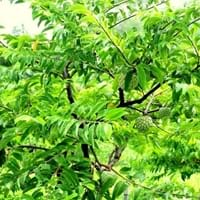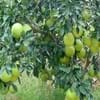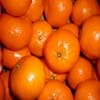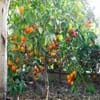Life Span
Perennial
Perennial
Origin
Southeastern Asia, Polynesia
Caribbean, South America
Types
African Shaddock,Chandler Pomelo,Kao Phuang Pomelo,MeloGold Pomelo-Grapefruit,Minneloa Tangelo
Pinks Mammoth, African Pride, Late Gold, Geffner, Hilary White
Number of Varieties
Not Available
Habitat
Clay soil areas, Coastal Regions
Warm and moist climatic conditions
USDA Hardiness Zone
10-11
10-13
Sunset Zone
H1, H2, 8, 9, 12, 13, 14, 15, 16, 17, 18, 19, 20, 21, 22, 23, 24
Not Available
Habit
Oval or Rounded
Upright/Erect
Flower Color
White
Yellow green
Flower Color Modifier
Bicolor
Bicolor
Fruit Color
White, Yellow, Light Pink
Light Green, Sea Green
Leaf Color in Spring
Green, Dark Green
Light Green
Leaf Color in Summer
Green, Dark Green
Light Green
Leaf Color in Fall
Green, Dark Green
Light Green
Leaf Color in Winter
Light Green
Light Green
Leaf Shape
Compound
oblong or narrow-lanceolate
Plant Season
Spring, Summer, Fall, Winter
Summer
Sunlight
Full Sun, Partial Sun
Full Sun, Partial Sun
Type of Soil
Loam, Sand
Loam, Sand
The pH of Soil
Acidic, Neutral
Acidic, Neutral, Alkaline
Soil Drainage
Well drained
Well drained
Bloom Time
Indeterminate
Early Summer, Summer
Tolerances
Drought
Drought
Where to Plant?
Ground
Container
How to Plant?
Grafting, Seedlings
Seedlings
Plant Maintenance
Medium
Medium
Watering Requirements
Needs watering once a week, Requires consistently moist soil
Do Not over Water, Does not require regular watering
In Summer
Lots of watering
Lots of watering
In Spring
Moderate
Moderate
In Winter
Average Water
Average Water
Soil pH
Acidic, Neutral
Acidic, Neutral, Alkaline
Soil Type
Loam, Sand
Loam, Sand
Soil Drainage Capacity
Well drained
Well drained
Sun Exposure
Full Sun, Partial Sun
Full Sun, Partial Sun
Pruning
Remove damaged leaves, Remove dead branches, Remove dead leaves
Prune young trees into an open vase shape
Fertilizers
All-Purpose Liquid Fertilizer
Nitrogen
Pests and Diseases
Red blotch
Anthracnose, Diplodia rot, Leaf spot
Plant Tolerance
Drought
Drought
Flowers
Showy
Insignificant
Flower Petal Number
Single
Single
Fragrant Bark/Stem
Yes
No
Foliage Texture
Medium
Medium
Foliage Sheen
Glossy
Matte
Attracts
Birds, Butterflies
Fruit Bats
Allergy
Dermatitis, Skin irritation
Oral Allergy
Aesthetic Uses
Not Available
Not Used For Aesthetic Purpose
Beauty Benefits
Brightens the skin complexion, Skin Problems
Promotes Healthy Hair, Promotes healthy skin
Environmental Uses
Air purification, Food for birds, Food for insects
Air purification
Medicinal Uses
Acne, Detoxification, Digestion problems, epilepsy, Kidney Stones, Nutrients, Obesity
Diabetes, Diarrhea
Part of Plant Used
Flowers, Fruits, Leaves, Seeds
Bark, Fruits, Seeds
Other Uses
febrifuge, Tea-like beverage can be brewed
Used to make hair tonic, Used to promote healthy blood flow during menstruation
Used As Indoor Plant
Insignificant
No
Used As Outdoor Plant
Yes
Yes
Garden Design
Container, Edible, Fruit / Fruit Tree, Shade Trees, Tropical
Fruit / Fruit Tree, Shade Trees, Tropical
Botanical Name
CITRUS maxima 'Hirado'
ANNONA squamosa
Common Name
pomelo, pomello, pummelo, pommelo, pamplemousse, jabong, shaddick,or shaddock
Sugar Apple
In German
Pampelmuse
Zuckerapfel
In French
Citrus maxima
Sugar Apple
In Spanish
Citrus maxima
Manzana de azúcar
In Greek
Not available
ζάχαρη της Apple
In Portuguese
Pomelo
Pinha
In Polish
Pomarańcza olbrzymia
Cukier Jabłko
In Latin
Citrus maxima
Sugar Apple
Phylum
Magnoliophyta
Magnoliophyta
Class
Magnoliopsida
Magnoliopsida
Order
Sapindales
Magnoliales
Family
Rutaceae
Annonaceae
Clade
Angiosperms, Eudicots, Rosids
Angiosperms, Magnoliids
Subfamily
Aurantioideae
Maloideae
Number of Species
Not Available
Not Available
Season and Care of Pummelo and Sugar Apple
Season and care of Pummelo and Sugar Apple is important to know. While considering everything about Pummelo and Sugar Apple Care, growing season is an essential factor. Pummelo season is Spring, Summer, Fall and Winter and Sugar Apple season is Spring, Summer, Fall and Winter. The type of soil for Pummelo is Loam, Sand and for Sugar Apple is Loam, Sand while the PH of soil for Pummelo is Acidic, Neutral and for Sugar Apple is Acidic, Neutral, Alkaline.
Pummelo and Sugar Apple Physical Information
Pummelo and Sugar Apple physical information is very important for comparison. Pummelo height is 610.00 cm and width 610.00 cm whereas Sugar Apple height is 460.00 cm and width 610.00 cm. The color specification of Pummelo and Sugar Apple are as follows:
Pummelo flower color: White
Pummelo leaf color: Green and Dark Green
Sugar Apple flower color: Yellow green
- Sugar Apple leaf color: Light Green
Care of Pummelo and Sugar Apple
Care of Pummelo and Sugar Apple include pruning, fertilizers, watering etc. Pummelo pruning is done Remove damaged leaves, Remove dead branches and Remove dead leaves and Sugar Apple pruning is done Prune young trees into an open vase shape. In summer Pummelo needs Lots of watering and in winter, it needs Average Water. Whereas, in summer Sugar Apple needs Lots of watering and in winter, it needs Average Water.





